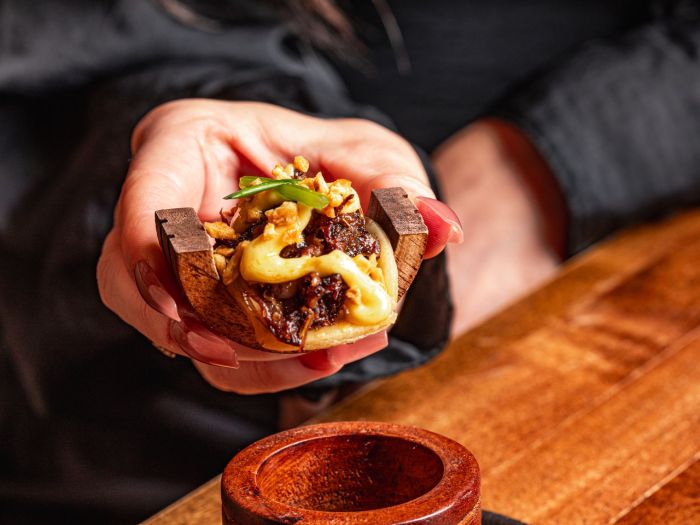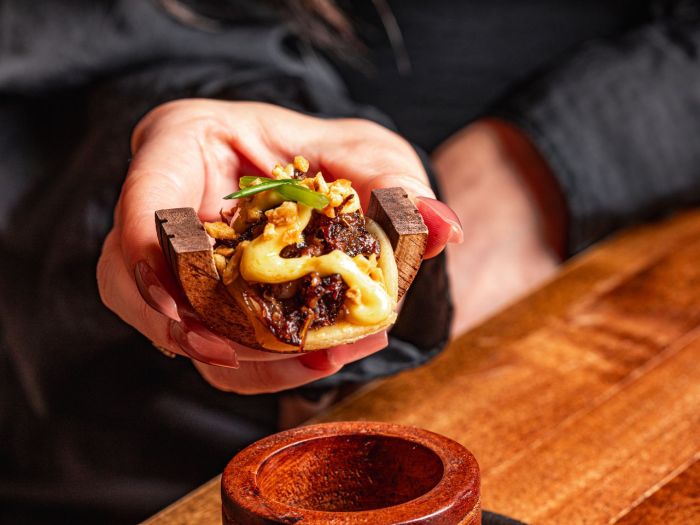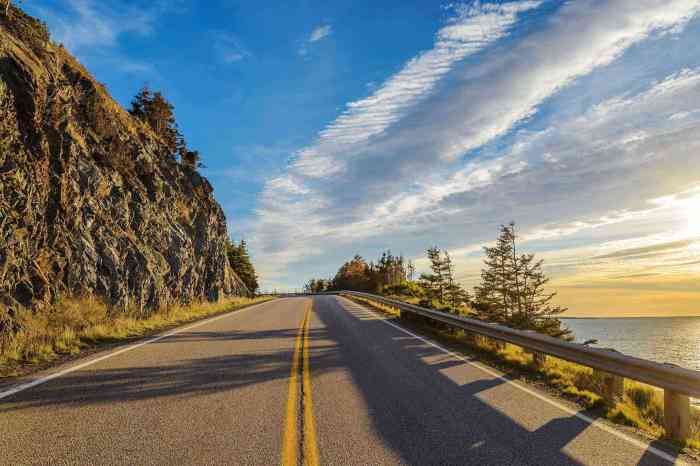Best way to spend fifty dollars around the world? This exploration dives deep into maximizing your travel experience on a shoestring budget. From discovering hidden gems in local markets to finding free activities, we’ll unlock the secrets to experiencing different cultures without breaking the bank. Get ready to explore the world, one affordable adventure at a time.
Imagine immersing yourself in a vibrant local market, savoring delicious street food, and visiting iconic landmarks – all while sticking to a budget of just $50. This guide will equip you with practical strategies and inspiring ideas for making the most of your travel dollars, ensuring your global adventures are both memorable and budget-friendly. We’ll cover everything from planning your itinerary to finding the perfect souvenirs, all while keeping an eye on the costs involved.
Exploring Budget-Friendly Experiences
Budget travel doesn’t mean sacrificing experiences. It’s about maximizing your time and money in exciting destinations. This section dives into practical strategies for creating unforgettable adventures without breaking the bank, focusing on activities, accommodation, and transportation within a $50 daily budget.Finding affordable travel options can be a rewarding experience. It allows for deeper immersion in local culture, fostering genuine connections and creating lasting memories.
Careful planning and research are key to making the most of your trip while staying within budget.
Budget-Friendly Activities Around the World
Budget travel often involves seeking out unique and authentic experiences that offer value for your money. This approach can enrich your journey, offering a deeper connection to the local culture and creating memories that extend far beyond the tourist trail.
- Thailand: Attend a temple ceremony. Many temples in Thailand host daily or weekly ceremonies, offering a glimpse into Buddhist traditions. These ceremonies are often free or have a small donation-based admission. You can witness the intricate rituals and interact with locals in a meaningful way.
- Colombia: Take a walking tour of a local neighborhood. Many neighborhoods in Colombia have unique historical and cultural stories. Local guides can offer insights into the neighborhood’s history, art, and culture, often for a small fee or even for free. This offers a chance to explore the vibrant street life and local customs.
- Peru: Visit a local market. Explore the vibrant atmosphere of a Peruvian market, like the Mercado Central in Lima, for an authentic taste of local life. You can find fresh produce, crafts, and local snacks, often at affordable prices.
- Morocco: Get lost in the souks (markets). Explore the maze-like alleyways of the Moroccan souks, bargaining for souvenirs and handicrafts. This provides a fantastic opportunity to interact with vendors, learn about their traditions, and potentially find unique treasures.
- Vietnam: Enjoy a cooking class. Many local restaurants offer cooking classes, allowing you to learn about Vietnamese cuisine and prepare delicious meals yourself. This is a hands-on experience that lets you sample the flavors of the region while potentially saving on dining costs.
Cost, Time, and Cultural Significance Comparison
This table illustrates the cost, time commitment, and cultural value of the chosen activities:
| Activity | Estimated Cost (USD) | Time Commitment (approx.) | Cultural Significance |
|---|---|---|---|
| Thailand Temple Ceremony | $0-$5 | 1-2 hours | Experience Buddhist traditions and local customs. |
| Colombia Neighborhood Tour | $5-$15 | 2-3 hours | Learn about local history and culture, engage with the community. |
| Peru Local Market Visit | $5-$20 | 2-4 hours | Immerse yourself in vibrant local life, discover fresh produce and crafts. |
| Morocco Souk Exploration | $5-$15 | 2-4 hours | Bargaining, interaction with vendors, and unique souvenirs. |
| Vietnam Cooking Class | $10-$25 | 2-3 hours | Learn about Vietnamese cuisine, sample local dishes, and potentially save on meals. |
Affordable Travel Options for Food and Accommodation
Finding budget-friendly accommodation and food can significantly enhance your travel experience. Look for hostels, guesthouses, or homestays, which are often significantly cheaper than hotels. Local markets are great places to find fresh produce, affordable snacks, and meals. Street food vendors offer an authentic and economical dining experience.
Unique Methods for Saving Money on Transportation
Efficient transportation is crucial for a seamless journey. Here are some methods to save on travel costs:
- Ride-sharing services: Services like Grab or Bolt offer a cost-effective alternative to taxis, especially in Southeast Asia, Latin America, and parts of Africa.
- Public transportation: Buses, trains, and metro systems are often cheaper than taxis or ride-sharing services.
- Hitchhiking: In some regions, hitchhiking is a safe and economical way to travel between destinations, particularly in countries with well-established bus or train systems.
Planning a Budget-Friendly Itinerary
Creating a week-long budget-friendly itinerary involves several key steps:
- Define your budget: Determine a daily budget for food, activities, and accommodation, factoring in travel costs.
- Research destinations: Identify countries and cities that align with your budget and interests.
- Book accommodations in advance: Consider hostels, guesthouses, or homestays to save money.
- Plan activities: Explore free or low-cost activities like walking tours, visiting local markets, or attending cultural events.
- Map out transportation: Utilize public transport, ride-sharing services, or hitchhiking to minimize travel costs.
- Prepare for unforeseen expenses: Set aside a small amount of money for unexpected situations.
Discovering Local Markets and Street Food
Unveiling the vibrant tapestry of global cuisine often begins at the heart of local communities – bustling markets and enticing street food stalls. These hubs offer an unparalleled opportunity to immerse oneself in the local culture while experiencing authentic flavors at budget-friendly prices. This exploration delves into the diverse world of local markets and street food, highlighting their affordability, cultural significance, and culinary delights.Exploring local markets and street food is more than just a culinary adventure; it’s a cultural immersion.
It allows you to connect with the community, sample unique dishes, and gain a deeper understanding of local traditions and daily life.
Local Markets Around the World
Local markets offer a window into a community’s life, providing a rich tapestry of affordable food and goods. Here are five renowned markets known for their affordability and diverse offerings:
- La Boqueria Market (Barcelona, Spain): This iconic market, brimming with fresh produce, seafood, and cured meats, offers a vibrant atmosphere and a wide array of Spanish delicacies. Typical prices for fresh produce are moderate, while seafood and cured meats can vary significantly based on the type and quality. Tourists can find a variety of affordable snacks and meals within the market, making it an excellent choice for budget-conscious travelers.
- Central Market (Los Angeles, USA): A historic landmark, this market boasts a wide range of fresh produce, ethnic foods, and prepared dishes. Prices for produce are generally comparable to other local markets, while ethnic foods and prepared meals can be more affordable depending on the specific vendors and offerings.
- Tsukiji Outer Market (Tokyo, Japan): While the inner market is highly sought after for its fresh fish auctions, the outer market provides a more accessible experience. It’s known for its wide selection of fresh produce, seafood, and Japanese delicacies. Prices for fresh seafood are often lower than those in the inner market, and you can find affordable cooked dishes, including sushi and ramen.
- Chatuchak Weekend Market (Bangkok, Thailand): This massive market, open only on weekends, is a shopper’s paradise. It’s not just about clothes and souvenirs; it offers an enormous selection of affordable food stalls, from Thai curries to street snacks. Prices are generally very affordable, and the sheer variety makes it a unique culinary experience.
- Mercado de San Miguel (Madrid, Spain): This vibrant market is known for its tapas bars and food stalls. Prices for tapas are typically affordable, and the atmosphere is lively and welcoming. This is an ideal place to sample a variety of Spanish dishes at a reasonable cost.
Street Food Price Comparison
The affordability and variety of street food differ significantly across regions. This table compares the prices and variety of street food in three distinct regions:
| Region | Typical Street Food Items | Average Price Range (USD) | Variety |
|---|---|---|---|
| Southeast Asia (e.g., Thailand, Vietnam) | Pad Thai, spring rolls, street noodles, fresh fruit juices | $1-$5 | High, with numerous variations of each dish |
| Latin America (e.g., Mexico, Colombia) | Tacos, empanadas, pupusas, arepas | $2-$7 | Moderate, with diverse fillings and preparation methods |
| Europe (e.g., Spain, Italy) | Tapas, pizza al taglio, paninis, fresh pastries | $3-$8 | High, offering diverse flavors and preparations, with many items having multiple sizes |
Saving Money at Local Markets
Local markets are more than just a source of food; they can also be a budget-friendly way to manage daily expenses. Here are three creative ways to save money:
- Purchase in bulk: Many markets offer produce and other goods in bulk at a lower per-unit cost. This can be particularly helpful for longer trips or for preparing meals in advance.
- Cook your own meals: Local markets provide fresh ingredients that can be used to create delicious and affordable meals. Purchasing ingredients separately can often be cheaper than eating out, especially when compared to tourist-oriented restaurants.
- Take advantage of market deals: Many markets have deals or special promotions. Stay aware of these to maximize savings on items you are buying.
Cultural Impact of Street Food
Street food is not just about sustenance; it’s a vibrant expression of a culture. It reflects the local traditions, ingredients, and culinary creativity of a community. Street food vendors often pass down generations of knowledge and culinary practices, shaping the cultural identity of a region. This can often be seen in the variety of street food and ingredients used in different areas.
Looking for the best way to spend fifty bucks abroad? Checking out filming locations from popular movies can be a fantastic budget-friendly adventure. For instance, exploring the locations where “Little Women” was filmed, like the charming streets of New England little women filming locations , could be a truly immersive experience without breaking the bank. A few carefully chosen souvenirs or a local meal can round out a memorable trip, making the most of your travel budget.
Choosing Affordable and Delicious Street Food
Selecting the most affordable and delicious street food involves a few key considerations. First, look for stalls that are popular with locals, as this often indicates high quality and authenticity. Second, carefully consider the ingredients used in the dishes. Lastly, don’t hesitate to ask questions about the preparation methods and ingredients used. This helps you ensure the food is safe and caters to your preferences.
Utilizing Free Activities and Attractions

Embarking on a budget-friendly adventure often involves seeking out the hidden gems that don’t come with a hefty price tag. Free activities and attractions offer a unique perspective on a destination, allowing you to immerse yourself in the local culture and spirit without emptying your wallet. From exploring historical landmarks to engaging with local communities, these experiences can be incredibly rewarding and offer a deeper understanding of the place you’re visiting.Free activities are a fantastic way to discover the soul of a city or country.
They often lead to unexpected encounters and experiences, enriching your travel memories far beyond the typical tourist traps. They can introduce you to hidden corners, local traditions, and passionate individuals who are excited to share their culture with you.
Free Activities in Different Cities
Discovering free attractions and activities is an essential part of a budget-friendly travel strategy. These experiences provide a unique opportunity to connect with the local culture and spirit. The following list showcases a variety of free activities across different cities:
- Paris, France: Stroll along the Seine River, admiring the iconic bridges and the city’s architecture. The Seine River offers stunning views and a relaxing atmosphere. The best time to visit is during the early morning or late afternoon when the crowds are smaller.
- Kyoto, Japan: Explore the serene Arashiyama Bamboo Grove. This captivating natural wonder provides a tranquil escape from the city bustle. It’s advisable to visit during the day, ideally in the morning or early afternoon to avoid midday crowds.
- Rio de Janeiro, Brazil: Wander through the beautiful Sugarloaf Mountain. Take in the breathtaking panoramic views of the city and Guanabara Bay. The best time to visit is early morning or late afternoon, when the crowds are smaller, allowing for more focused enjoyment of the views.
- Rome, Italy: Visit the Trevi Fountain and toss a coin for good luck. This iconic landmark offers a photo opportunity and a chance to experience the vibrant atmosphere of the city. It’s best to visit during the early morning or late afternoon to avoid the midday rush.
- Barcelona, Spain: Explore the Gothic Quarter. This historical neighborhood is full of narrow streets, charming squares, and historical buildings. Visit during the day for optimal exploration, ideally in the early morning or late afternoon to experience a less crowded environment.
Comparison of Free Activities
This table compares the free activities in three different countries, highlighting their accessibility and appeal.
| Country | Activity | Location | Accessibility |
|---|---|---|---|
| France (Paris) | Seine River Stroll | Along the Seine River | Easy access, good for all ages |
| Japan (Kyoto) | Arashiyama Bamboo Grove | Arashiyama | Easy access, good for all ages |
| Brazil (Rio de Janeiro) | Sugarloaf Mountain | Sugarloaf Mountain | Easy access, may require some effort for uphill journey |
Finding Free Activities, Best way to spend fifty dollars around the world
Online resources and local community forums can be invaluable tools for discovering free activities. Websites like TripAdvisor, Time Out, and local city tourism websites often list free events, walking tours, and open houses.Local community forums, such as Nextdoor or Reddit, can provide firsthand insights from locals, suggesting hidden gems and free events happening in the area. Check out local blogs and websites as well; they often post about free events and activities in the community.
Maximizing Free Activities
Making the most of free activities involves more than just showing up. Here are three ways to enhance your experience:
- Research the history and significance of the place. Understanding the context behind a monument or a local market can significantly enhance your appreciation for the culture. This approach helps avoid the trap of merely looking, rather than seeing, and provides a deeper understanding.
- Engage with locals. Strike up conversations with people you encounter. Asking simple questions about the area or their lives can lead to unexpected insights and experiences. This strategy can uncover hidden stories and perspectives, enriching your experience.
- Be open to spontaneity. Don’t be afraid to deviate from your planned itinerary. A chance encounter or a serendipitous discovery can be far more rewarding than a meticulously planned excursion.
Free Activities and Cultural Immersion
Free activities are fundamental to experiencing a new culture authentically. They provide opportunities to connect with the local community, understand their traditions, and witness their daily lives. Participating in free activities fosters a deeper connection with the place you visit and provides a richer, more meaningful travel experience.
Creative Ways to Spend Fifty Dollars: Best Way To Spend Fifty Dollars Around The World
Fifty dollars might seem like a small amount, but it can go a long way in creating memorable experiences and unique souvenirs. This budget allows for exploring local crafts, supporting artisans, and fostering a deeper connection with the culture. With careful planning and a keen eye, you can transform a modest sum into a treasured memento.A well-spent fifty dollars can turn into a tangible representation of your travel adventures, from local artwork to handmade crafts.
It’s about finding the balance between affordable souvenirs and meaningful experiences, enriching your journey while supporting local communities.
Personalized Souvenir Ideas
A great way to make your souvenirs truly unique is to create personalized items. Instead of mass-produced trinkets, consider bespoke crafts or experiences. This can involve commissioning a small piece of art, having a local artist personalize an existing item, or creating a handcrafted item yourself.
- Commissioned Artwork: A local artist might be willing to create a small painting, drawing, or sculpture for a reasonable price. You can provide inspiration, like a photo of a local landmark or a scene from your travels. This gives you a unique, one-of-a-kind piece of art, often with a deeper cultural connection.
- Personalized Jewelry: Many artisans craft personalized jewelry, like necklaces or bracelets, with unique designs or local symbols. You can often specify the design, materials, and even add a personal touch to the piece.
- Handmade Pottery or Ceramics: In many countries, local artisans create beautiful pottery or ceramics. A small bowl, vase, or decorative plate can make a wonderful souvenir, especially if it’s a custom design reflecting a local style.
- Local Textiles or Clothing: Many countries are known for their unique textiles. Consider buying a hand-woven scarf, a locally-designed tote bag, or a traditional garment. These items are often imbued with cultural significance.
- Photo Album or Scrapbook: Create a custom photo album or scrapbook filled with your travel memories. Gather photos and mementos and include handwritten captions or quotes reflecting your experiences. It’s a lasting memory you can revisit and share with others.
Cost-Effectiveness and Cultural Significance
Comparing costs is crucial. Consider the price of a mass-produced souvenir versus a unique, handmade item. While the former might be cheaper, the latter often carries a greater cultural significance. Handmade items often support local artisans, directly impacting their livelihoods.
| Souvenir Type | Cost-Effectiveness | Cultural Significance |
|---|---|---|
| Mass-produced trinkets | Generally cheaper | Often lacks cultural depth; may not support local communities |
| Handmade crafts | Can vary; often slightly higher | Directly supports local artisans; often carries rich cultural meaning |
| Local food products | Can be highly cost-effective | Provides a taste of local culture; supports local farmers and businesses |
Supporting Local Artisans
Buying from local artisans and small businesses is paramount to supporting the local community. It means more than just buying a souvenir; it’s about investing in the cultural heritage and the livelihood of local people. Local markets are often a good place to find unique items and interact directly with the artisans.
“Supporting local artisans isn’t just about buying a souvenir; it’s about preserving cultural traditions and empowering local communities.”
By choosing to spend fifty dollars on experiences or items crafted by local artisans, you are directly contributing to the preservation of cultural heritage and the livelihood of individuals in the community. This is a sustainable and meaningful way to travel.
Adapting to Different Currencies and Exchange Rates
Navigating international travel on a budget requires a keen understanding of currency exchange. Knowing how to calculate costs in different currencies, comparing exchange rates, and utilizing financial tools effectively are crucial for staying within your spending limit. This section delves into the practicalities of adapting to various currencies and exchange rates, providing actionable tips for savvy budget travelers.Understanding exchange rates and how to calculate costs in foreign currency is essential for effective budgeting.
This section details the practical aspects of converting between currencies and managing your finances while traveling internationally.
Exchange Rates and Currency Conversion
Different countries have different currencies, and their values fluctuate constantly. Staying informed about current exchange rates is vital for accurate budgeting. The value of your home currency against a foreign currency can affect your spending power significantly.
Looking for the best way to spend fifty bucks while traveling? Consider Costa Rica! Exploring places locals love, like the hidden waterfalls and vibrant markets detailed in places locals love in costa rica , can offer incredible experiences without breaking the bank. A delicious meal, a local craft, or a scenic hike are all fantastic ways to make the most of a budget-friendly adventure.
Exchange Rates Comparison
This table displays the current exchange rates of five countries against a hypothetical home currency (USD). These rates are subject to change, so it’s always advisable to check the most recent rates before traveling.
| Country | Currency | Exchange Rate (USD per unit of foreign currency) |
|---|---|---|
| United Kingdom | British Pound (GBP) | $1.30 |
| Japan | Japanese Yen (JPY) | $0.008 |
| Mexico | Mexican Peso (MXN) | $0.05 |
| Thailand | Thai Baht (THB) | $0.03 |
| South Korea | South Korean Won (KRW) | $0.0008 |
Average Prices of Common Items
This table provides a glimpse into the average cost of common items in different countries, helping you estimate expenses. Note that these are just estimates, and actual prices may vary.
| Item | United Kingdom (GBP) | Japan (JPY) | Mexico (MXN) | Thailand (THB) | South Korea (KRW) |
|---|---|---|---|---|---|
| Bottle of Water | £1.50 | ¥150 | MXN 20 | THB 30 | KRW 1,500 |
| Meal at a Restaurant | £15 | ¥1,500 | MXN 150 | THB 300 | KRW 10,000 |
| Local Snack | £2 | ¥200 | MXN 25 | THB 50 | KRW 2,000 |
Calculating Costs in Foreign Currency
To calculate the approximate cost of an item in a foreign currency, use the current exchange rate. For example, if a bottle of water costs £1.50 in the UK and the exchange rate is $1.30 per £1, the approximate cost in USD would be $1.95.
Cost in Foreign Currency = Cost in Home Currency × Exchange Rate
Credit Cards and ATMs
Using credit cards and ATMs abroad can be convenient, but it’s crucial to understand potential fees and charges. Check with your bank about international transaction fees. Look for cards that don’t charge hefty fees for overseas use.
Figuring out the best way to spend fifty bucks abroad can be tricky, but sometimes the most impactful experiences aren’t the flashiest. For example, a visit to the house of the wannsee conference in Germany offers a powerful, albeit sobering, glimpse into history. Learning about the conference’s horrific implications can be deeply moving and offer a unique perspective, even within a limited budget.
Ultimately, though, the best way to spend fifty dollars abroad depends on your interests and the destination, but a thoughtful exploration of history often offers the most lasting value.
Currency Exchange Risks and Benefits
Exchanging currency can be beneficial by providing immediate access to local currency. However, there are potential risks, including fluctuating exchange rates, commission fees, and the possibility of getting unfavorable rates.
Embracing Budget-Conscious Travel Styles
Traveling the world on a shoestring budget is achievable with the right approach. This involves more than just finding cheap flights and accommodation. It’s about embracing a different mindset and exploring travel styles that prioritize experiences over material possessions. Choosing the right travel style can significantly impact your overall trip cost and your enjoyment.
Budget-Conscious Travel Styles
Several travel styles can help you experience the world without breaking the bank. These styles prioritize minimizing costs while maximizing your travel experience.
- Backpacking: This popular style involves carrying your essentials in a backpack, often staying in hostels or budget-friendly accommodations. It’s a highly mobile and versatile approach, ideal for exploring multiple destinations within a specific timeframe. Backpacking often requires more physical effort and can lead to a more immersive cultural experience due to the close proximity to locals and interactions in hostels.
- House Sitting: This involves caring for someone’s home while they are away in exchange for free accommodation. This style is perfect for those seeking a longer stay in a specific location and a chance to experience local life in a more authentic way. It can involve responsibilities like watering plants and checking on the property, and you may need to ensure your own safety and security during the stay.
- Couchsurfing: This platform connects travelers with locals who offer free accommodation in their homes. It’s a unique way to experience a culture from the inside, meeting new people, and getting valuable insights into a place. It is important to be respectful of the host’s space and routines. Couchsurfing may not always be possible in every location, and the availability of hosts can vary depending on the area.
Comparing and Contrasting Travel Styles
Each travel style offers distinct advantages and disadvantages, impacting the cost and experience in various ways.
| Travel Style | Advantages | Disadvantages | Estimated Costs (per week) |
|---|---|---|---|
| Backpacking | Highly mobile, diverse experiences, often lower accommodation costs, potential for meeting fellow travelers. | Can be physically demanding, may involve more independent planning, can lead to a more transient experience. | $200 – $500 |
| House Sitting | Free accommodation, immersive local experience, longer stays possible, opportunity to meet locals. | Limited mobility, potential for responsibility and commitment to the host’s property, needs a period of verification for safety. | $0 – $100 (depending on the level of responsibility) |
| Couchsurfing | Free accommodation, cultural immersion, opportunity to meet new people, direct insight into local life. | Limited mobility, dependence on host availability, need for respectful communication and adherence to host’s rules. | $0 |
Getting Started with a New Travel Style
Starting a new travel style requires careful planning and consideration.
- Backpacking: Research destinations, book hostels in advance, pack light, and create a budget for food and activities. Consider budgeting for unexpected expenses like lost luggage.
- House Sitting: Join a house-sitting platform, review the profiles of hosts carefully, ensure you’re comfortable with the responsibilities, and prepare for communication and trust-building with the host. Research the local area for safety concerns before you depart.
- Couchsurfing: Create a profile on the Couchsurfing platform, communicate with potential hosts, respect their space and routines, and understand the local customs before your visit. Ensure you are aware of the local laws and cultural expectations for visitors.
Flexibility and Adaptability in Budget Travel
Budget travel thrives on flexibility and adaptability. Travel plans should be open to change, and you should be prepared to adjust your itinerary based on unforeseen circumstances or better opportunities. This allows for more spontaneous exploration and the chance to discover hidden gems along the way.
Wrap-Up

So, there you have it – a comprehensive roadmap to experiencing the world on a $50 budget. By embracing budget-friendly activities, exploring local markets, and utilizing free attractions, you can unlock a world of possibilities without emptying your wallet. This guide is more than just a list of tips; it’s an invitation to explore, discover, and connect with different cultures on a truly personal level.
Let the adventure begin!




